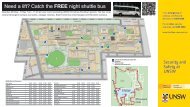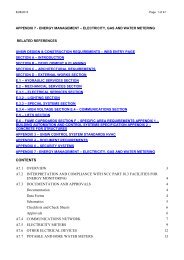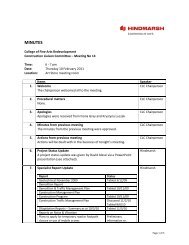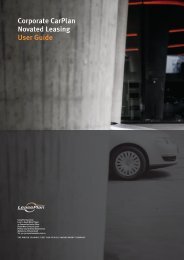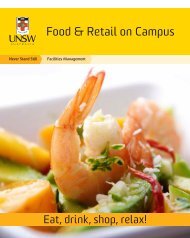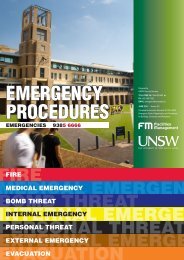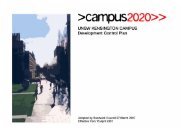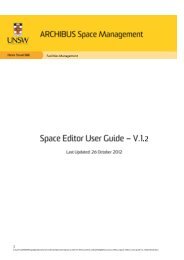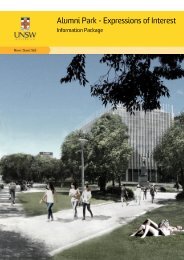Barbecue Risk Assessment form - UNSW Facilities Management
Barbecue Risk Assessment form - UNSW Facilities Management
Barbecue Risk Assessment form - UNSW Facilities Management
You also want an ePaper? Increase the reach of your titles
YUMPU automatically turns print PDFs into web optimized ePapers that Google loves.
<strong>Risk</strong> <strong>Assessment</strong> for task or process<br />
Date: School / Dept: <strong>Assessment</strong> completed by: Contact No.:<br />
What is the task <strong>Barbecue</strong> event<br />
Location where task is being conducted:<br />
Briefly explain the procedure for this task (incl. Ref to other procedures): Holding a barbecue event and cooking food<br />
Step in Process Hazards <strong>Risk</strong> (Harm) EXISTING CONTROLS <strong>Risk</strong> Rating<br />
(See over)<br />
Additional Controls<br />
<strong>Risk</strong> Rating<br />
(See over)<br />
C L R C L R<br />
Setting up the BBQ<br />
Cooking food<br />
After BBQ Event<br />
Faulty taps<br />
Gas cylinder test out of<br />
date<br />
Faulty gas connection<br />
Faulty pipes<br />
Manual handling<br />
Excess grease on BBQ<br />
Hot surfaces<br />
Grease dripping on<br />
ground<br />
Manual handling<br />
Disconnecting gas<br />
cylinder<br />
Cleaning BBQ<br />
Physical injury<br />
Explosion<br />
Fire<br />
Fire<br />
Burns<br />
Damage to<br />
surfaces under<br />
BBQ<br />
Physical injury<br />
Burns<br />
Visual inspection immediately before use<br />
Check that taps work correctly<br />
Check that taps are turned off before connecting to gas cylinder<br />
Check that the gas cylinder is in good condition and is within its test<br />
period for use (testing is required every 10 years)<br />
Check that pipes are in good condition<br />
Check that there is no gas leakage<br />
Rectify any faults before igniting burners<br />
Use safe manual handling techniques to avoid muscle strain<br />
Do not overload the BBQ<br />
Use suitable BBQ utensils to handle food<br />
The BBQ must be attended and supervised at all times<br />
Place cardboard under BBQ to prevent damage to tiles or other<br />
surfaces under BBQ.<br />
Use safe manual handling techniques<br />
Turn off gas securely<br />
Do not touch hot surfaces<br />
Leave BBQ clean for next user.<br />
2 D L Gas fuse safety cut-off<br />
device<br />
2 D L None<br />
2 D L None<br />
2 D L<br />
In the event of an emergency you will……… (include first aid provisions, procedure if spills/leaks/accident/fire/injury<br />
• Prior to the BBQ - Identify the location of the closest fire extinguisher in the closest building.<br />
• Prior to the BBQ - Identify the location of a first aider in the closest building.<br />
• In the event of a fire or the gas cannot be safely shut off evacuate the area and call Security on x56666<br />
• Be familiar with the <strong>UNSW</strong> Emergency Procedures for fires. (See <strong>UNSW</strong> Emergency Procedures Book)<br />
Other action required to ensure the safety of persons involved, equipment, the environment or members of the public.<br />
Follow good personal hygiene to prevent the spread of bacteria<br />
Prevent cross contamination of foods – keep raw and cooked foods separate<br />
Clean utensils thoroughly after using with raw food<br />
Cover any sores or cuts with waterproof dressings before handling food<br />
THE TASK SHOULD NOT PROCEED IF THE RISK RATING<br />
AFTER THE CONTROLS ARE IMPLEMENTED IS STILL EITHER<br />
HIGH OR EXTREME<br />
Supervisor or designated officer : Name: __________________________________ Signature____________________________ Date: _________________ Contact No. ______________<br />
(Please Print)<br />
<strong>Risk</strong> <strong>Assessment</strong> for outdoor BBQs.doc
Note: In estimating the level of risk, initially estimate the risk with existing controls and then review risk controls if risk level arising from the risks is not minimal<br />
TABLE 1 - CONSEQUENCE<br />
Level Descriptor Examples of Description<br />
1 Insignificant No injuries. Minor delays. Little financial loss. $0 - $4,999*<br />
2 Minor First aid required. Small spill/gas release easily contained within work area. Nil environmental impact. Financial loss $5,000 - $49,999*<br />
3 Moderate Medical treatment required. Large spill/gas release contained on campus with help of emergency services. Nil environmental impact. Financial loss $50,000 -<br />
$99,999*<br />
4 Major Extensive or multiple injuries. Hospitalisation required. Permanent severe health effects. Spill/gas release spreads outside campus area. Minimal environmental<br />
impact.Financial loss $100,000 - $250,000*<br />
5 Catastrophic Death of one or more people. Toxic substance or toxic gas release spreads outside campus area. Release of genetically modified organism (s) (GMO). Major<br />
environmental impact. Financial loss greater than $250,000*<br />
* Financial loss includes direct costs eg workers compensation and property damage and indirect costs, eg impact of loss of research data and accident investigation time.<br />
TABLE 2 - PROBABILITY<br />
Level Descriptor Examples of Description<br />
A Almost certain The event is expected to occur in most circumstances. Common or repetitive occurrence at <strong>UNSW</strong>. Constant exposure to hazard. Very high probability of<br />
damage.<br />
B Likely The event will probably occur in most circumstances. Known history of occurrence at <strong>UNSW</strong>. Frequent exposure to hazard. High probability of damage.<br />
C Possible The event could occur at some time. History of single occurrence at <strong>UNSW</strong>. Regular or occasional exposure to hazard. Moderate probability of damage.<br />
D Unlikely The event is not likely to occur. Known occurrence in industry. Infrequent exposure to hazard. Low probability of damage.<br />
E Rare The event may occur only in exceptional circumstances. No reported occurrence globally. Rare exposure to hazard. Very low probability of damage. Requires<br />
multiple system failures.<br />
TABLE 3 – RISK RATING<br />
Probability<br />
Consequence<br />
Insignificant<br />
1<br />
Minor<br />
2<br />
Moderate<br />
3<br />
Major<br />
4<br />
Catastrophic<br />
5<br />
A (Almost certain) M H E E E<br />
B (Likely) M H H E E<br />
C (Possible) L M H E E<br />
D (Unlikely) L L M H E<br />
E (Rare) L L M H H<br />
Recommended Action Guide:<br />
Abbrev Action Level Descriptor<br />
E Extreme The proposed task or process activity MUST NOT proceed until the supervisor has reviewed the task or process design and risk controls. They must take steps to firstly<br />
eliminate the risk and if this is not possible to introduce measures to control the risk by reducing the level of risk to the lowest level achievable. In the case of an<br />
existing hazard that is identified, controls must be put in place immediately.<br />
H High Urgent action is required to eliminate or reduce the foreseeable risk arising from the task or process. The supervisor must be made aware of the hazard. However, the<br />
supervisor may give special permission for staff to undertake some high risk activities provided that system of work is clearly documented, specific training has been<br />
given in the required procedure and an adequate review of the task and risk controls has been undertaken. This includes providing risk controls identified in<br />
Legislation, Australian Standards, Codes of Practice etc.* A detailed Standard Operating Procedure is required. * and monitoring of its implementation must occur to<br />
check the risk level<br />
M Moderate Action to eliminate or reduce the risk is required within a specified period. The supervisor should approve all moderate risk task or process activities. A Standard<br />
Operating Procedure or Safe Work Method statement is required<br />
L Low Manage by routine procedures.<br />
Adopted by <strong>UNSW</strong> Level 1 OHS Policy & Strategic Planning Committee on 11 June 2004 following RMU consultation meeting with Chairpersons of Level 2/3 and 3 OHS Committees 25.05.04<br />
<strong>UNSW</strong> RISK RATING ADAPTED FROM AS4360:1999 APPENDIX E



